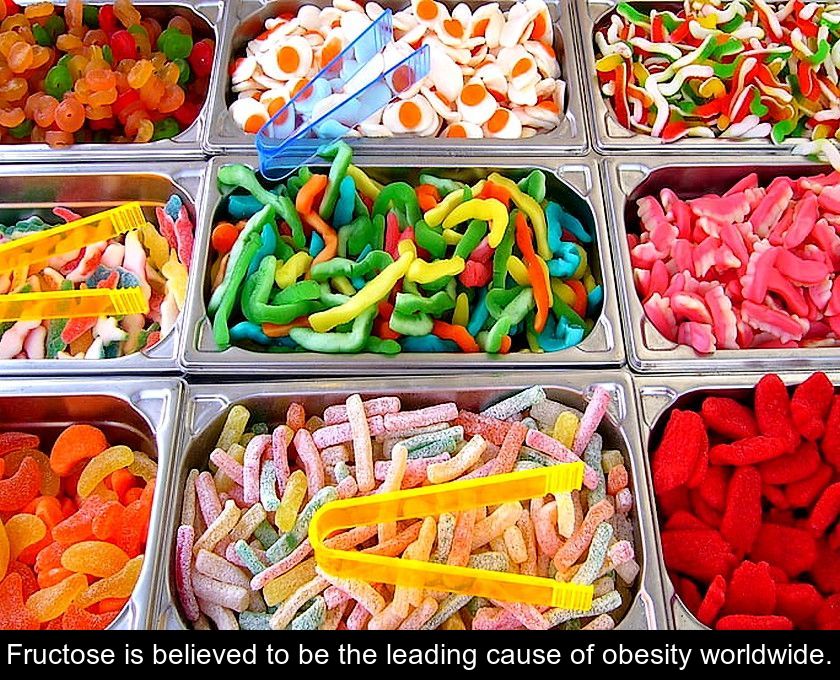Fructose Is Believed To Be The Leading Cause Of Obesity Worldwide.
According to a study from the University of Colorado in the United States, fructose is believed to be the leading cause of obesity worldwide. This naturally occurring sugar found in honey, fruits, and certain vegetables is also added in the form of syrup to many processed products. According to the authors of this American study, this simple carbohydrate completely disrupts our body's mechanisms of satiety and storage. Explanations.
Which foods contain fructose?
Fructose is a simple carbohydrate, just like glucose, sucrose, and lactose. It is a sugar naturally found in certain foods, particularly in honey and fruits, hence its name.
Honey contains nearly 40% fructose, while dried fruits such as raisins, figs, and dates contain 30%. For comparison, a pear contains 6% fructose, and a ripe banana contains 5%.
This sugar is also found in many vegetables such as carrots, and even in tubers like onion, Jerusalem artichoke, and chicory...
But most importantly, this simple sugar is a very common additive in ultra-processed products. It is widely used by the food industry because it has a strong sweetening power and is inexpensive. Therefore, it is abundant in sodas, cookies, and industrial desserts in the form of glucose-fructose syrup.
What are the dangers of fructose?
The dangers of fructose for health are related to excessive consumption of this simple sugar. When consumed in reasonable amounts and in combination with vitamins and natural fibers found in fruits, it poses no problem.
However, its excessive presence in ultra-processed products makes this naturally occurring sugar a formidable enemy for our health.
According to a recent American study, it disrupts the body and its metabolism. Instead of satiating, industrial products rich in glucose-fructose syrup would cause a feeling of hunger, leading consumers to eat more and consume more fat.
What are the harmful effects of fructose on weight?
According to a study published in October 2023 in the medical journal Obesity (link below), fructose completely disrupts our body by increasing hunger and preventing the burning of fats and calories ingested.
The researchers from the University of Colorado who conducted this study examined various potential factors of obesity. They discovered that when consumed in large quantities, this sugar reduces the concentration of adenosine triphosphate or ATP in the blood. However, this molecule contributes to providing energy to the cells in the body.
Consequently, the decrease in ATP levels in the blood leads to a decrease in available energy at the cellular level. The body sends a signal to the brain that it lacks energy and needs to eat.
According to these American researchers, excess fructose is the cause of an imbalance in energy and metabolism, creating a vicious cycle. It prevents the feeling of satiety and triggers the desire to consume more fatty foods in greater quantities.
In addition to increasing hunger and consumption of fatty foods, fructose also prevents the body from burning calories and tapping into its fat reserves. According to this study, this sugar puts the body in "low consumption mode," following an ancestral mechanism that allows large mammals to maintain their fat mass when meat becomes scarce and they have to rely exclusively on fruits and vegetables for nourishment.
The authors of this study have therefore hypothesized that this sugar is the primary cause of obesity worldwide because it makes our bodies believe that they need to store fat in preparation for a future period of scarcity. Originally intended to facilitate short-term survival, this characteristic now causes numerous diseases such as obesity, soda disease or fatty liver disease, and cardiovascular diseases.
Although further studies are needed to confirm this hypothesis, it represents a promising avenue for better preventing obesity and helping patients lose weight.
How to limit risks associated with fructose?
To avoid getting caught in this vicious cycle of weight gain linked to excessive fructose intake, the first step is to reduce consumption of sugary drinks and highly processed foods.
By choosing whole fruits over fruit juices and homemade meals over processed ones, you can quickly decrease your intake of high-fructose corn syrup. This will help limit the risks of obesity and, more broadly, teach you how to eat better for your health.









